

SUBSCRIBE TODAY!
Meat case study reveals continued growth for case-ready.
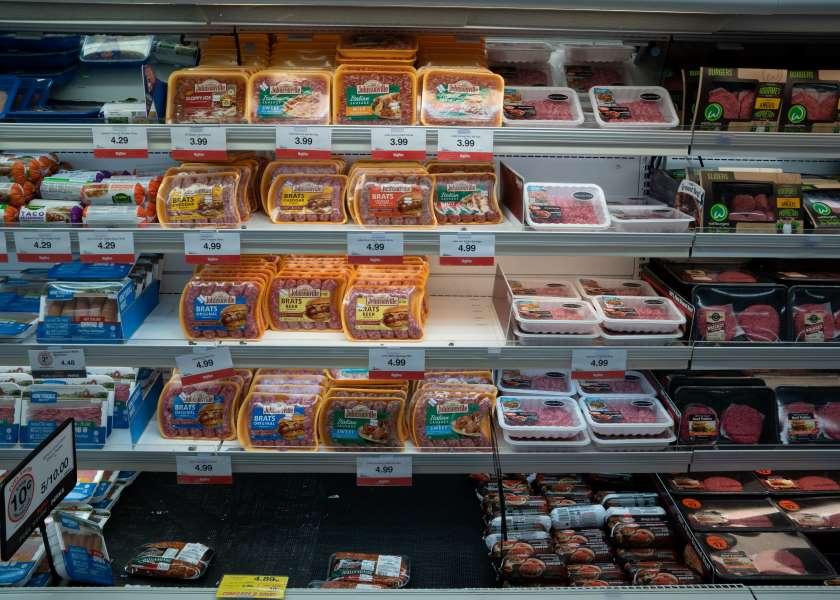
Case-ready continues to increase in popularity, now representing 83% of retail protein packages. That’s up from 49% of fresh meat in 2002 and 81% in 2018, according to the 2022 Cryovac Brand National Meat Case Study (NMCS), sponsored by Cryovac Sealed Air and conducted by 210 Analytics for the North American Meat Institute.
“This really gels with the fact that more and more retailers are switching to case-ready, and that number continues to grow,” says Stacey Couch, marketing development director retail & e-commerce at Sealed Air.
As consumer trust and acceptance of case-ready has risen, the 2022 National Meat Case Study shows that case-ready is now the norm across all proteins, led by turkey (99%) and chicken (96%). Beef is the most likely to be cut in store, though case-ready has increased to 71% of packages from 66% in 2018.
“When we started this study in 2002, 51% of product was being cut and packaged at the store level,” couch said. “Those numbers have completely flipped and now only 17% is being cut and packaged in store. Now, 83% of everything you see in store is processed and packaged away from the store.”
The study also reveals a reversal to the rise of boneless products, likely directly related to retailers’ challenge of hiring skilled butchers. Since 2018, boneless beef packages dropped from 92% to 87%, pork from 69% to 64% and chicken from 61% to 56%.
In a nod to growing interest in sustainable options, the NMCS shows increasing use of trayless packages (including semi-rigid) while foam trays are on the decline. Trayless now represents 41% of packages, up from 33% in 2018, while foam is now at 39%, down from 53% in 2018.
The 2022 National Meat Case Study was conducted between February and May of 2022. The study reflects research conducted at 152 stores in 97 U.S. cities, including a sample of 180,000 packages and 20,500 SKUs.
Latest News
High prices are a welcome change for cattle producers, but it’s important to remember that higher prices mean mistakes cost more than when prices are low, says a University of Missouri Extension livestock specialist.
USDA said this week cow-to-cow transmission is a factor in the spread of avian flu in dairy herds, but it still does not know exactly how the virus is being moved around.
A new study debunks plant-based meat analogue product claims to be healthier for your diet than real meat.
U.S. agriculture reduced greenhouse gas emissions through voluntary conservation efforts and market-based incentives.
The advent of timed AI protocols became a game-changer in allowing professionals, like AI technicians or veterinarians, to breed many females effectively and quickly.
One of the industry’s leading collaborations between Purina Animal Nutrition and Zinpro helps optimize cattle performance.
Meat Packaging in the Digital Age

Image courtesy of SEE.
New capabilities with digital printing and smart packaging are changing how meat is packaged, and this is positively impacting everyone from processors to retailers to the end consumer.
Now that technology enables us to mass-produce digitally printed materials cost-effectively at the manufacturer or processor, we can produce smart, connected packages that disrupt the status quo and create a more innovative and consumer-focused approach to meat packaging and delivery.
Processors can save time and money with track and trace benefits, brands can connect with consumers in new ways—encouraging brand loyalty—and consumers are experiencing a host of benefits at the point of purchase to help make their shopping experience easier and more enjoyable.
A closer look shows how meat packaging in the digital age is enhancing the experience for everyone. Consumers experience a host of digital packaging benefits at the point of purchase, making their shopping easier and more enjoyable. Advancements in digital print technology enable high-speed, mass production of high-quality digital images onto flexible packaging materials.
Full-Color Printing That’s Flexible and Accessible
Cost savings, flexibility and speed are benefits too important to overlook. Advancements in digital print technology is enabling high-speed, mass production of high-quality digital images onto flexible plastic packaging materials. All of these translate to benefits such as faster, lower-cost graphics preparation and changes, shorter lead times and smaller minimum order quantities.
Digital printing also enables cost savings and simplified pricing by eliminating line, benday and process print distinctions. This means you no longer need to worry about pricing by number of colors or order size.
These new technologies offer more flexibility than ever, including the option to have a company do the digital printing for you or bring it in-house. By printing in your own facility, you can optimize the process and print only what you need when needed, thereby eliminating any excess waste. This helps to lower material costs and reduce working capital due to more efficient inventory management. And, by printing on the production floor, graphics changes can be implemented quickly and with less changeover time.
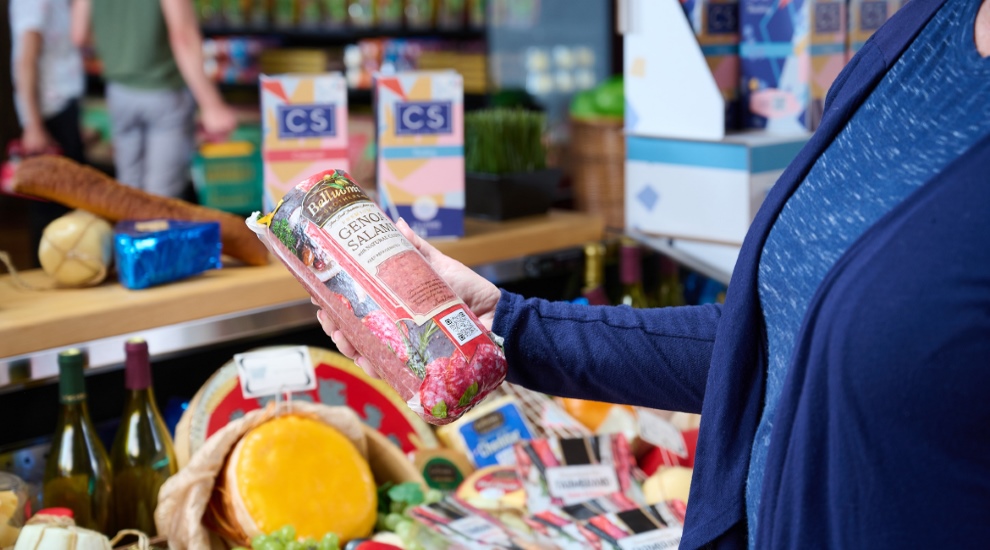
The Digital Packaging Effect on Operational Efficiencies
Today’s automation technologies in combination with advancements in printing, allow for a unique serialized product code to be printed on every package. And digitizing every package allows you to follow it throughout its entire lifecycle.
When every package has a digital code, it gives each product a unique identity. So you can track and trace and pinpoint quality issues before they create a bigger problem, such as a recall, that can cost a lot of time and money.
Here’s how this works: As soon as a product is packaged, it gets an identity and claims its place in the cloud. This means you can see it and track it through every stage in the process—through packaging, through the supply chain and into the consumer’s hand. This provides true farm-to-fork visibility.
Digitizing every product allows for managing inventory in real-time, gaining valuable insights into your operations and learning where there is room for operational improvement. If there is an efficiency problem, you can trace that problem and identify parts of that process that need improvement or employees that need additional training. This can help with a reduction in re-work, increase throughput and increase yield—all enhancing your operational efficiencies.
Once the package begins its journey, digital packaging can help identify and correct inefficiencies within the supply chain. For example, you might see that a package takes five days to get to the next stop, but it should only take two days. With this type of visibility, you can identify and correct inefficiencies within your supply chain without wasting much time.
With digital packaging, we can see the provenance of a package from the time it was conceived . For example, if we have information from the farmer about where the cattle were raised, this can be attached to the package identity. A way to authenticate the product, from farm to fork, is important for food safety concerns.
Digital packaging also offers sustainability benefits, including reducing the amount of materials used and food waste. For example, smart labels can replace traditional packaging labels, reducing the amount of paper and adhesive needed. And with the ability to track and trace every product, digital packaging can help reduce food waste by providing real-time information about the quality and freshness of the food.
Digital packaging gives every product a unique code, enabling automation, and providing visibility throughout the supply chain. Quality issues as well as operational inefficiencies can quickly be identified and addressed.
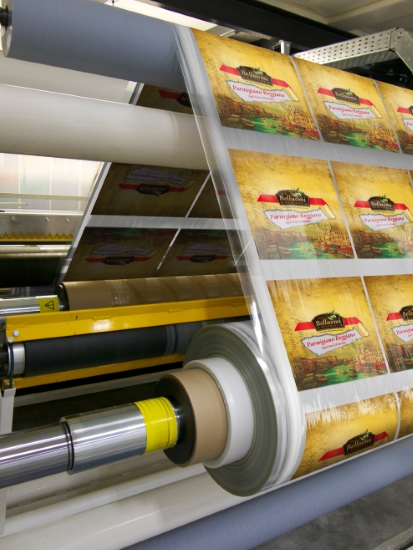
Consumers are Embracing the Digital Age Digital packaging can also be used to create a more engaging and interactive shopping experience for consumers. Today’s consumers are expecting more from their packaging, including transparency, coupons, recipes and sustainability claims. And at the same time, consumer preference for case-ready meat has been growing for the past two decades.
Findings from SEE’s 2022 National Meat Case study show that case-ready packages across all proteins have grown in share from less than half of packages in the meat case in 2002 to 83% in 2022.
So with so much growth in case-ready, how can brands stand out in the case and create customer loyalty?
Simply put, digital packaging amplifies the impact of packaging. It provides a unique experience, enabling richer communication and meaningful consumer connections. This gives an edge to companies, no matter how their consumers shop, from e-commerce to in-store to third-party collection and delivery, the value of branded packaging is maximized.
Connected packaging allows brands to reach out and engage with those customers, telling their stories and creating value in a way that hasn’t been possible before. Using their mobile devices to scan QR codes printed on each package, consumers can learn more about each product—from coupons and recipes to sourcing and sustainability claims.
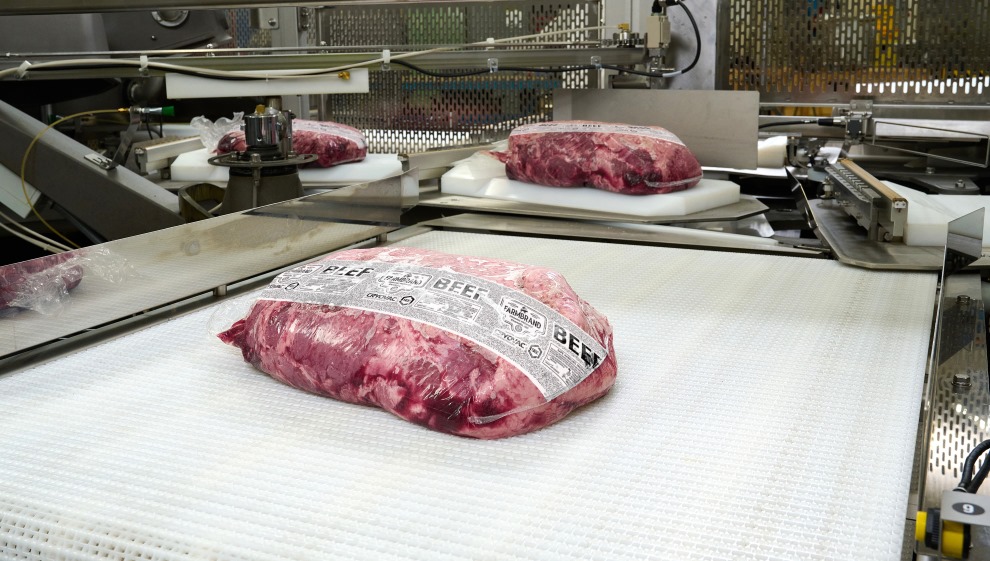
As shopping with their devices in hand has become a way of life for consumers, the future of digital packaging is more than a QR code that takes a customer to a generic website. With a new cloud re-direction, every scan is analyzed by a cloud platform and can take consumers to a personalized experience.
So, consumers can access information such as popular recipes for their region, local promotions and specifics regarding recycling packaging materials and company and product information. While it's important to always include branding and product info, offering unique content by location or time can personalize consumer engagement and keep them coming back for more.
And since the solution is completely digital and cloud-based, brands can test and revise these messages as needed, based on real-time data on how consumers respond to messages. Data such as scan location, time, date and number of scans empower brands to make better business decisions.
Digital packaging allows companies to build a brand that consumers repeatedly want to do business with. It provides consumers a unique experience and value beyond the product while companies receive the data and analytics they need to build strong brands, make business decisions, increase engagement and improve brand loyalty.
Digital packaging significantly benefits the meat industry, from improving food safety and quality to reducing waste and costs. By embracing these new capabilities, companies can stay ahead of the competition and meet the evolving needs of consumers.
Share This Story

Tiffani Burt, Ph.D. is SEE's executive director of sustainability, graphics & smart packaging. Tiffani has been with the company for 10 years, starting in Research & Development where she led research efforts in microlayering, bioprocessing, sustainable solutions, and front-end innovation. She has a Bachelor of Science in Chemistry and a Doctorate in Macromolecular Science and Engineering from Case Western Reserve University.

Shawn Harris, executive director of marketing for the proteins platform, holds more than 25 years of experience at SEE, all focused on protein packaging. After graduating from Texas A&M University with both a bachelors and masters of science degree in animal science, Harris joined SEE in 1995 and has worked in several roles including R&D and technical sales, as well as leadership roles in sales and marketing.
Restricted Content
You must have JavaScript enabled to enjoy a limited number of articles over the next 30 days.
Related Articles

Modified atmosphere packaging use grows in fresh meat packaging

Smart packaging: Connecting the physical with the digital

Packaging and Food Scarcity: The Profitability in Waste Reduction
Get our new emagazine delivered to your inbox every month., stay in the know on the latest food and beverage manufacturing markets..
Copyright ©2024. All Rights Reserved BNP Media.
Design, CMS, Hosting & Web Development :: ePublishing
Grazing growth

Jeff Tripician’s next chapter in the meat industry will be his last. That’s why he wants to make it count.
The announced merger of two grass-fed beef leaders in November that brought together SunFed Ranch and Teton Waters Ranch (TWR), to form Grass Fed Foods (GFF), signaled the formation of one of the largest grass-fed beef entities in the country. The deal, which stakeholders described as a “stock swap,” with no cash changing hands was painstakingly negotiated by Boulder, Colo.-based Sunrise Strategic Partners (SSP), a growth equity firm and the lead investor in Teton Waters Ranch since its founding in 2016 (resulting from its partnership with Trilantic Capital Management L.P.) and SunFed Ranch. Grass Fed Foods was a valuable concept to make a reality as the company pushes to get more non-traditional beef onto the plates of more American consumers.
“The time is right for grass-fed beef with consumer interest in organic, sustainable and regenerative foods at an all-time high,” said Jeff Tripician, a beef-industry veteran who was appointed chief executive officer of Teton Waters Ranch this past May. “Trip” will now serve as president and CEO of the new, combined company.
“Grass Fed Foods will lead the way for consumers that want to upgrade their beef purchases to a better, healthier choice for themselves, their family and the planet, allowing them to embrace these products,” Tripician said.
Prior to joining Teton Waters, Tripician worked as president of Perdue Premium Meat Co., which included the brands of Niman Ranch, Coleman Natural, Panorama Organic Grass-Fed, Sioux Preme and Alexander & Hornung. His resume includes 36-plus years of marketing and branding experience and about 25 years working in the meat industry.
While discussing this new endeavor, he shared how he believes GFF can make a meaningful difference in the health and wellness of consumers by putting more non-traditionally produced beef on the plates of more consumers. Reducing childhood obesity and giving aging consumers better diet control while relying less on pharmaceuticals are just some of the benefits, he said. Meanwhile, the new platform will give ranchers another option to access an additional market to sell their cattle and give foodservice players an opportunity to expand their menus.
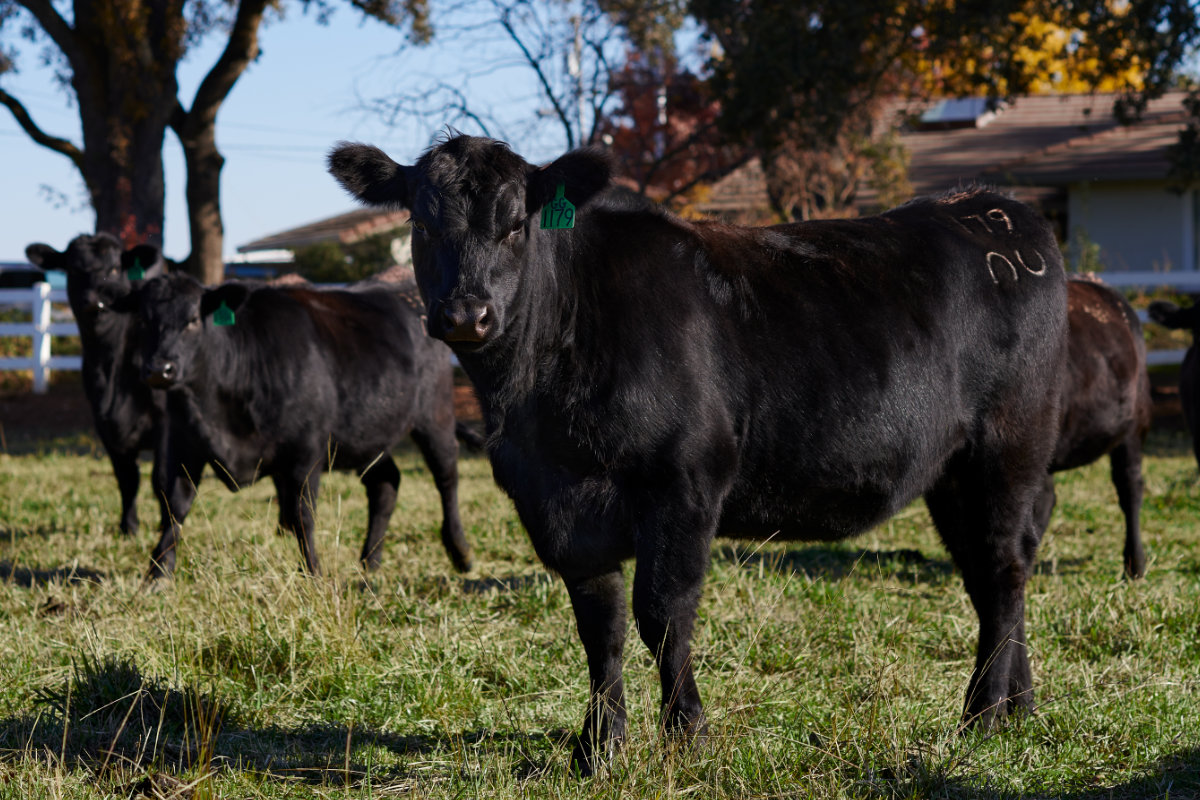
Opportunities knocking
After joining TWR in 2022, Tripician recognized SunFed Ranch as a valuable supplier, but after hearing their story and strategy, he realized a more meaningful message could be sent with the right partner.
“If we’re going to resonate and try to change the way people think about grass-fed and human health and planet health, then we should do it together,” Tripician said.
When looking for grass-fed beef products, Tripician wants to examine all elements, including where the livestock’s genetics come from, what land it’s raised on and soil production on that land.
With SunFed Ranch, those boxes are checked. Based in Woodland, Calif., Matt Byrne, SunFed Ranch co-founder and sixth-generation rancher, shared his support for this deal and how it can improve the lives of US cattle ranchers and US families.
“At the core of our company is creating the connection between these families. Every parent wants to see their family thrive,” Byrne said. “Grass-fed beef is a simple change that improves family diets and regenerates the land we all count on.”
Another partner at SunFed Ranch, Chris Donati, co-founder and CEO, said that as a fifth-generation rancher, his role as a steward of the land, livestock and ranchers is at the very core of what they do at the company.
“We have grass-fed ranching and livestock relationships that allow us to scale the brand with great partners coast-to-coast,” Donati added.
GFF shared that the combined businesses would have more than $150 million in sales at the merger date, trailing 12 months. SunFed itself raises about 350 cattle per week with the ability to grow in the future.
Even with the generations of knowledge, SunFed made changes in the last 15 years that added to its existing cattle business.
Byrne shared that controlling most aspects from the farm to the table was the best route to sustain what the family built.
“We’re really trying to make these connections and you have to have a bridge all the way to the consumer and we found that the best way to get there was to work to build it ourselves,” he said.
SunFed looks at its business through the lens of regenerative agriculture, the constant improvement of vital soil health principles, and how grazing animals provide meaningful benefits to the landscapes when managed appropriately.
The company works with dozens of ranchers across California and other states in the West. A few of those ranchers take the final steps to finish the animal with grass through the process.
For SunFed, that means no grain, corn or feedlot.
Now, as the company moves away from a California regional business to nationwide, Grass Fed Foods plans to help market the SunFed meat throughout the process to retain ownership of every aspect of its process.
Tripician and Byrne talked considerably about giving choices to existing shoppers.
They both mentioned that people have many options for organic milk, eggs and other products but beef still makes up less than 1% of total sales.
“And it’s not because the shopper is not there. It’s because the delivery system hasn’t been developed yet,” Byrne said.
But that’s now changing with another important asset of this new partnership. As of January 2023, TWR products were being moved with foodservice redistribution company Dot Foods. Products featured under the SunFed Ranch label will begin shipping in February.
“A current customer can now type into their computer when they’re ordering whatever else they order from Dot, they can order anything from Teton and anything from SunFed and it’s delivered in four to five days,” Tripician said.
Setting up a nationwide distribution channel from Dot Foods allows Tripician to grow the Grass Fed Foods line to a much wider audience.
He said having a distribution partner like this was crucial. At a previous stop working with similar products at Niman Ranch, the final product would run through one cold storage facility.
With Dot, GFF can reach 12 distribution centers, so its meat can have a greater reach. Grass Fed Foods will be an additional pallet added on and Tripician shared that Dot already has full trucks moving around the United States with other refrigerated products.
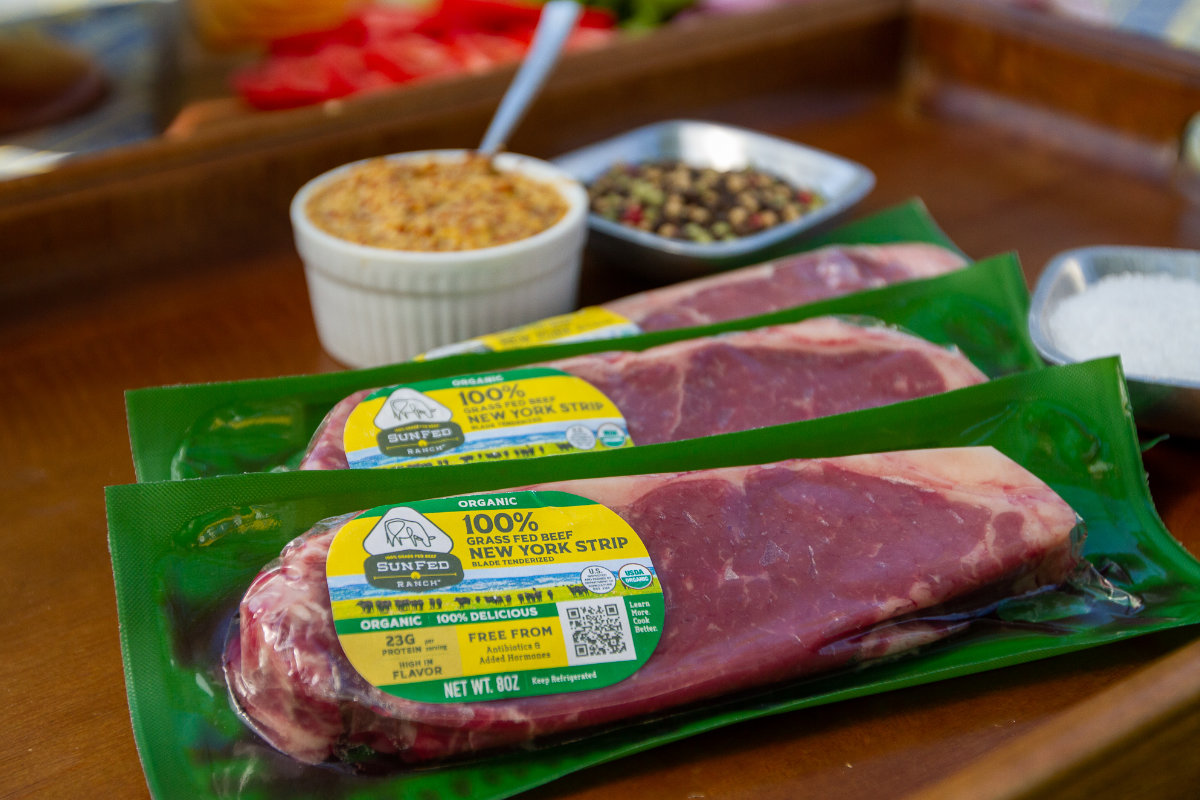
Trusted partners
One of the people helping launch the product is Kirk Halpern, founder and CEO of Farmers & Fisherman Purveyors in Atlanta.
Halpern has a proven track record of developing meat businesses starting with Buckhead Beef and then building Halperns’ Steak & Seafood into a standout player in the space.
He’s now taken on all the challenges presented during COVID-19 and continues to push forward into 2023.
“Through our combined work with Farmers & Fisherman and Teton Waters Ranch we’re going to create the demand,” Halpern said of the Grass Fed Foods. “Our customer base is predominately comprised of the thought leaders in culinary within our marketing area. If we take what will be set up to be a great program with all the positive attributes that Trip and his team are going to deliver, we believe we can take that to the marketplace and rely on our expertise but validate it with their own taste buds.”
Halpern worked extensively with Tripician and Amanda Duran at Niman Ranch and was always satisfied with the outcomes for business and clients. So even before Grass Fed Foods took purchase orders, Halpern was happy to put one down because he trusted the relationship.
“I don’t do that with anybody, but I do that with Trip because of my complete confidence in him and in the program that he’s going to develop,” Halpern said.
Duran, now the chief revenue officer for GFF, said foodservice distribution will help tap into new generations to expand the product.
“With the strong demand for grass-fed by younger millennial and Gen Z consumers and established consumers who care about better-for-you claims upgrading their shopping carts, it is only natural for grass-fed beef to find its way onto progressive-minded menus across the country — from fast-casual, to colleges and universities, to corporate dining, grass-fed beef is a clear upgrade consumers want and expect today,” Duran said.
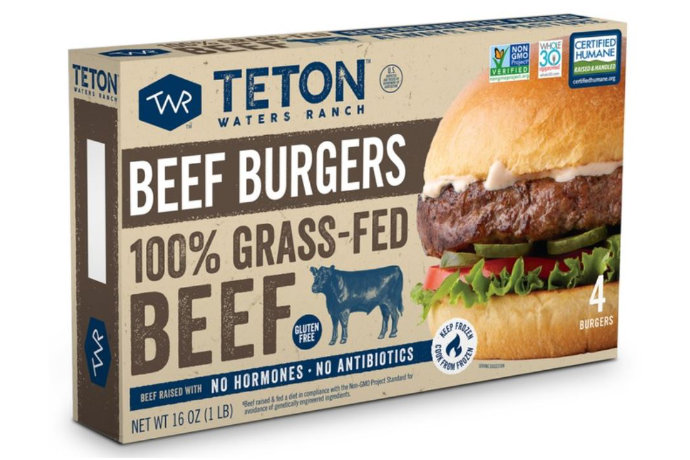
Key technologies
After six generations, Byrne and others at SunFed are convinced that the knowledge base about soil preservation and conservation around California can help the business compete with traditional, grain-fed cattle around the country.
“We’re taking our historic strengths and, in some ways, turning back the clock to a world where more cattle were finished on grass and taking the learnings of that historically, and adding to it the benefits of technology today so that we can rapidly develop the next set of improvements that help make the business positioned to grow,” Byrne said.
Technology plays a part in Grass Fed Food’s plans. In California, the company can track much of the grazing and convey how the company color codes ranches to ensure the specific length of grass that is needed to move cattle. Byrne said that since his operation has become larger, identifying the right people and traceability have been critical for cattle sourcing.
“We have a program that’s grass-fed, antibiotic-free and we have a program that is Grass Fed Organic,” Byrne said. “We need to know which cattle sit in which of the various programs and doing so with more than a pad of paper in your pocket, which is kind of a historic ranching tool for tracking information.”
In October 2022, Teton Waters Ranch also announced that it would elevate its sourcing practices to apply end-to-end traceability using Wholechain.
The company said the system allows for tracing beef products throughout the supply chain, starting at the birth farm and recording data points along the way on the Algorand zero-carbon blockchain.
More points for customers
Tripician believes that more exposure to dining experiences will lead to purchases in retail. When he came to Teton Waters Ranch, foodservice was not part of the plan, but he strongly believes in bringing a product to consumers. A large portion of placing these two brands together was a push for foodservice products with grass-fed beef.
“We’re opening foodservice, because that’s where people try stuff,” he said. “We need them to go to a good place that they like and say, ‘Oh, Teton’s on the menu.’”
Tripician and Byrne want restaurants to give them a chance to upgrade some of their fully cooked options on the menu, whether it’s a hot dog, slider or sausage using their grass-fed product.
“We want to make available for them what we have available for us at home,” Byrne said.
Above all else, Byrne and Tripician want people to know the purpose behind this partnership and operation.
They share a vision of caring about the people buying their beef and giving them options that can benefit them with better health and a better planet.
“We really strongly believe that there are more consumers and more customers who have this interest,” Byrne said.
Grass-fed adds up
Anne-Marie Roerink, founder of San Antonio, Texas-based 210 Analytics, said retail sales of products in the grass-fed segment in the United States generated $822 million during the 52 weeks ended Aug. 8, 2022.
Roerink stated that additional grass-fed sales could be found on other platforms like Butcherbox, Wild Fork, farmers’ markets and farm direct among others.
“Just three years ago, sales were $613 million in the traditional multi-outlet universe, which means sales have increased 34.1% versus pre-pandemic levels,” she added. “This means it is highly conceivable that we are going to see sales hit the one-billion-dollar mark in the next few years in the traditional channels alone.”
Even in a demanding marketplace with inflation impacting all consumers, grass-fed beef sales increased over the last year by 4.6%
“America’s reduced purchasing power has prompted shifts throughout the store and beef is not immune to the many money-saving strategies,” she said. “During typical times of inflation, we tend to see a shift from beef to pork and chicken. Chicken is indeed picking up a bit of that business, however, poultry is having its own inflationary problems in the light of avian influenza. That said, we have seen grass-fed demand hold up during periods of high inflation or recessionary times. This is because core grass-fed shoppers have very specific reasons for buying the product.”
Support in the retail category is also sustaining. According to the 2022 National Meat Case Study by Sealed Air, 11% of total beef packages in the meat case had a grass-fed label. That is up from 10% in 2018.
Related Articles
210 analytics: plant-based meat alternatives see growth during pandemic, signs of sluggish growth in china seen in commodity market, taco bell has a global growth plan, current issues & directories.

Popular Articles
Owner of five poultry plants owes workers $3.8 million in back wages, damages, superior farms takes on denver ballot initiative that would shutter its plant, dol files child labor suit against poultry processors, texas reports its first human case of hpai, popular galleries.

Conagra Brands focuses on future in frozen food
Innovations across frozen food brands capitalize on popular consumer and restaurant trends.
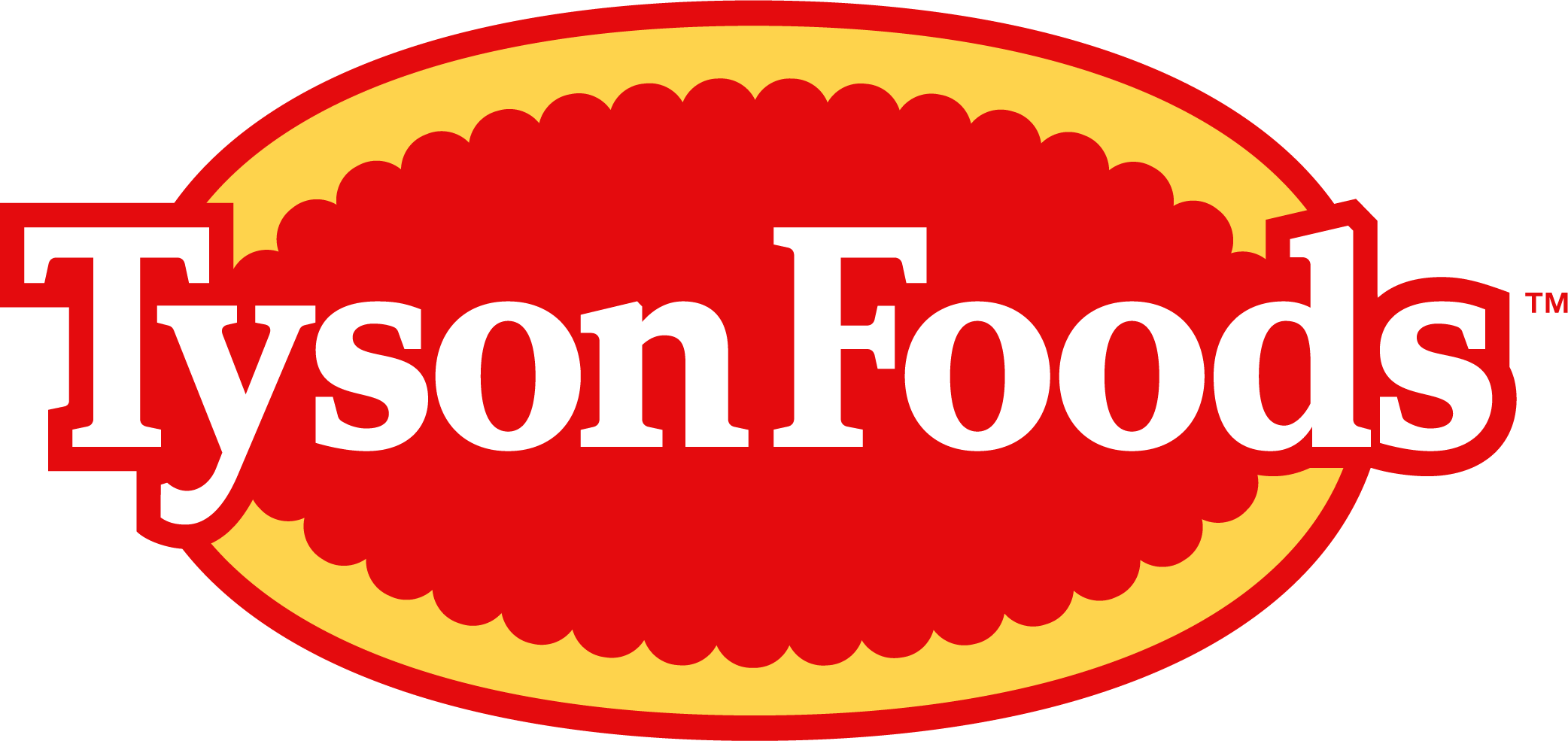
Case Ready Meat Is Here To Stay. How Can You Use It To Drive Sales?

More Than Meat: Supporting Our Case Ready Communities and Team Members

How Production Facilities Work to Conserve Resources and Be Responsible Neighbors

A Lone Star Leader: Learn About Tyson Foods’ Production Facility in Sherman, Texas

4 Ways Consumers Are Trying To Solve for Food Price Inflation

Tuffy Stone
Tuffy’s classical French culinary training and precision earned him the nickname “The Professor.” Along with operating his own restaurant and catering business, he also authored the cookbook “Cool Smoke: The Art of Great Barbecue.”

Justin McGlaun
Justin’s team, Lucky’s Q, has competed in nearly 200 events, with notable wins in the Sam’s Club National Championship and King of the Smoker competitions.

USAPEEC ASEAN
- Market News
Growing Demand For Case-Ready Meats
- By : usapeecadmin
- Categories: market-news
A 2022 Cryovac Brand National Meat Case Study (NMCS), sponsored by Cryovac Sealed Air shows that case-ready continues to increase in popularity, currently representing 83% of retail protein packages. This is up from 49% of fresh meat in 2002 and 81% in 2018, according to the study. More and more retailers are switching to case-ready and it is now the norm across all proteins, led by turkey (99%) and chicken (96%). Beef is the most likely to be cut in store, though case-ready has increased to 71% of packages from 66% in 2018. When the study was first conducted in 2002, 51% of product was being cut and packaged at the store level. The numbers have completely flipped and now only 17% is being cut and packaged in store.
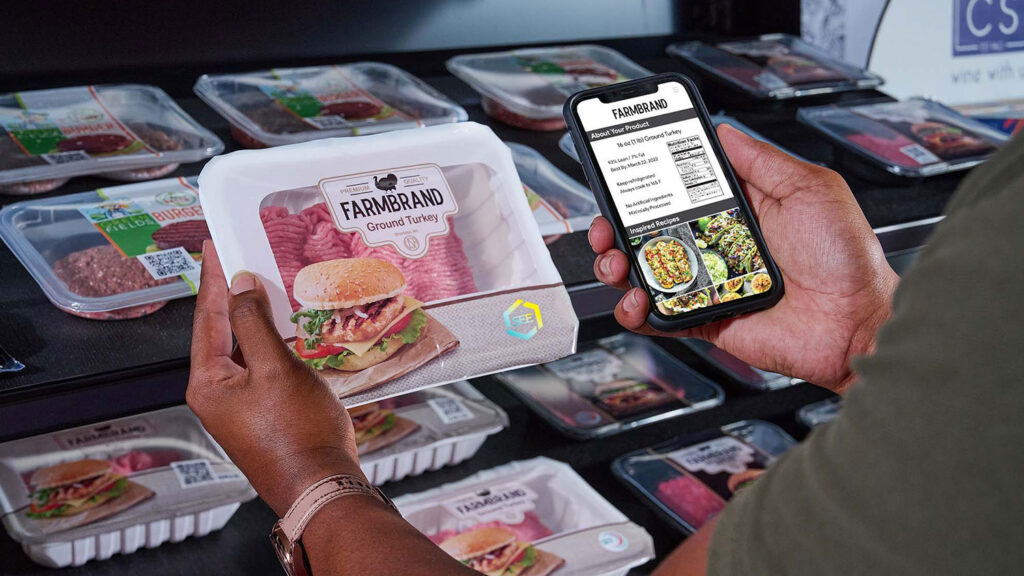
Case-ready continues to increase in popularity, currently representing 83% of retail protein packages. (Photo – Sealed Air)
The NMCS study which was conducted between February and May of 2022 reflects research conducted at 152 stores in 97 U.S. cities, including a sample of 180,000 packages and 20,500 SKUs. The study also showed a reversal to the rise of boneless products, likely directly related to retailers’ challenge of hiring skilled butchers. Since 2018, boneless beef packages dropped from 92% to 87%, pork from 69% to 64% and chicken from 61% to 56%. To cater to the growing interest in sustainable options, the study shows increasing use of trayless packages (including semi-rigid) while foam trays are on the decline. Trayless now represents 41% of packages, up from 33% in 2018, while foam is now at 39%, down from 53% in 2018.
In Asia, the demand for case-ready meats is increasing, driven by rapid urbanization, the pandemic, growth in e-commerce and changing consumer behavior, reports Asian Agribiz. With the opening of every new supermarket and convenience store, the demand for case-ready meats increases. Since the pandemic, the industry has witnessed strong growth in e-commerce, where people have their groceries delivered at home. The main advantage of case-ready meats is centralized, cost-efficient processing and packaging under strict hygiene conditions, which leads to optimal product safety and shelf life. In addition, case-ready meats allows manufacturers to standardize their production process, by using standard pack formats, crates, and pallet sizes, which leads to logistical benefits, and enables the meat industry to maintain quality control by using modified atmosphere packaging. This is crucial to prolong the shelf life, preventing food waste.
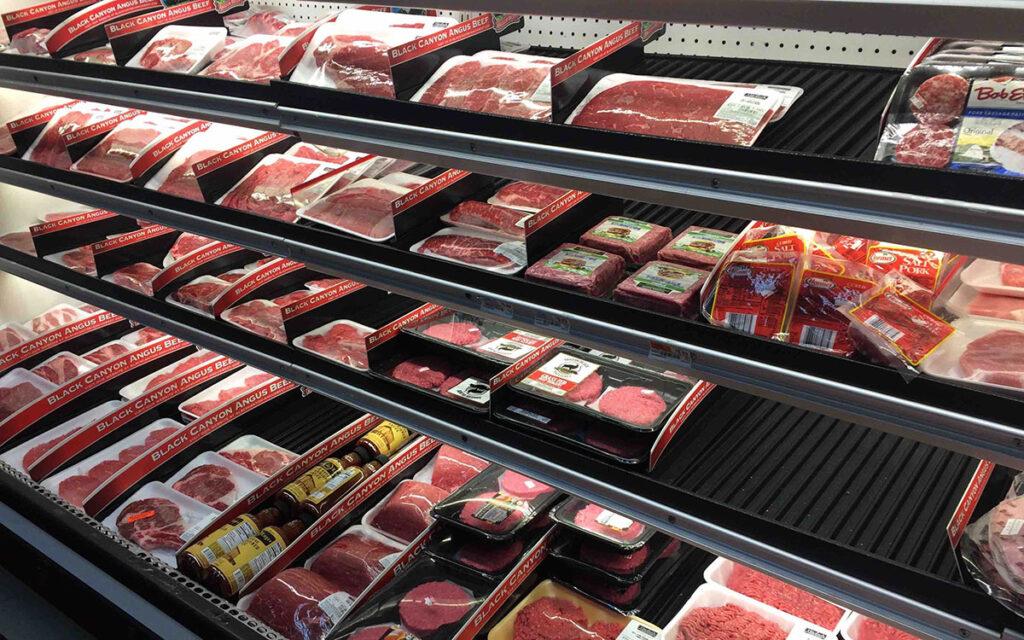
Case-ready meats have longer shelf-life and are easier to distribute and store. (Photo – Supermarket News)
The demand for more sustainable packaging and portion sizes are the key driving factors for the case-ready meat trend in Asia. Retailers are adding pressure to their suppliers to come up with sustainable alternatives for their current packaging system, while portion size has become more apparent in the number of single-person households and smaller families growing across the globe.
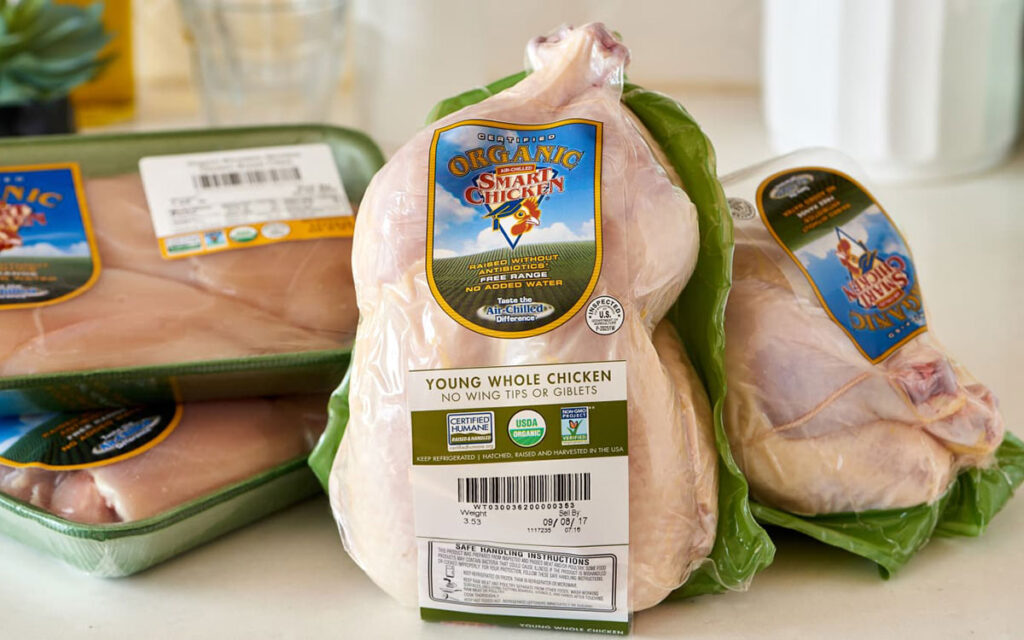
Demand for more sustainable packaging and portion sizes are key drivers for the case-ready meat trend in Asia. (Photo – Kitchn)
Consumer trust and acceptance of case-ready meats are rapidly increasing. Although many supermarkets continue to allow consumers to pick the meat from trays, more and more are providing case-ready meats. Social media platforms have become the go-to platforms to educate consumers about case-ready meats highlighting the source of these products, the production facility it was prepared in, including proper handling and food safety management.

MARKET NEWS
- U.S. poultry masterclass at SHATEC
- How to Cook Bebek Goreng (Indonesian Fried U.S. Duck)
- How to Cook Butter U.S. Chicken Curry
- Tailored Seminar and Cooking Contest in Vietnam for Hướng Nghiệp Á u (HNAAu)
- USAPEEC Exhibiting at FHA-F&B 2024 in April
- Food service sector in the Philippines is forecast to grow by 10%
NEW COUNTRY REPORTS
- Country Reports from USDA offices in the ASEAN region have been updated. See Export Assistance under Resources and Library
IN THE REGION
- E-mart to begin convenience store business and expansion
- McDonald’s planning for expansion in Sabah
- Starbucks launches first signing store in Borneo
- Brothers Burger new menu offers Boneless Chicken in nine flavors
- Hard Rock Cafe launches Asian food, quirky drinks
- KFC Singapore releases Hot Devil Drumlets
- foodpanda Singapore partners with DFI Retail Group
- S-Pure unveils new healthy line-up
- Lotte launches Vietnam’s largest shopping mall
COPYRIGHT ©2024 USA POULTRY & EGG EXPORT COUNCIL
Case Studies Subscribe
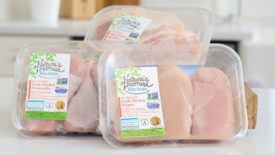
Case Study: Ahold Delhaize USA increases circularity of plastic poultry packaging
System keeps more flexible plastics moving through the supply chain, instead of being discarded after a single use.

Case Study: Ossid gets an 'A' from Auburn University’s Poultry Science department
Auburn University and Ossid partner to bring a more in-depth education to poultry science students.

Case Study: Moxa solution curtails downtime in food processing plants
Moxa Remote Connect secure remote access gateways enable easy and secure remote diagnostics, maintenance, and troubleshooting, regardless of the location or time zone.

Case Study: CBS Bio Platforms takes feed science to the farm
Strong roots in science anchor an increasingly diverse CBS innovation and commercialization pipeline t hat delivers new knowledge and technology to farmers across sectors.
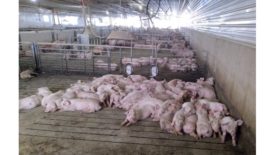
Case Study: HPGen improves gain and feed efficiency at pig farm
The results on Pete Matthews' farm represent a strong positive economical impact for the operation, as pigs grow faster and with less food consumption.

Case Study: Kurita’s S.sensing CS technology increases lost product recovery
A meat processor uses S.sensing technology to increase lost product recovery by more than 30% resulting in an annual savings of $400,000.

Case Study: Maintaining the mechanical integrity of evaporative condensers
A comprehensive program of routine preventive maintenance will keep refrigeration systems performing at peak efficiency and ensure reliable and safe operation.

Case Study: 2022 National Meat Case Study findings unveiled
Eighth edition of the NMCS reveals growth for case-ready and sustainable packaging.
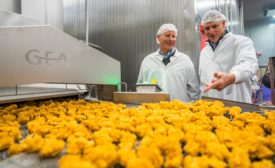
Case Study: Gold Creek expands using flexible equipment solutions
Gold Creek Foods Vice President of Operations Don Dubnik explains why collaboration and trust with suppliers is crucial when purchasing equipment to expand into new markets.

Case study: trū Shrimp Companies combine sustainability and safety
Through its patented Tidal Basin technology , the Minnesota-based startup is growing mass quantities of shrimp in a controlled environment with near-zero waste, changing the way shrimp is produced, with the help of Intertek Alchemy.
Get our new eMagazine delivered to your inbox every month.
Stay in the know with the national provisioner's comprehensive coverage of the meat and poultry processing industry..
Copyright ©2024. All Rights Reserved BNP Media.
Design, CMS, Hosting & Web Development :: ePublishing
Survey tallies consumer attitudes toward lab-grown meat alternatives
- Story by Steve Koppes
- April 10, 2024
M any consumers view conventional meats as both tastier and healthier than laboratory-grown alternatives, according to the March Consumer Food Insights Report .
The survey-based report out of Purdue University’s Center for Food Demand Analysis and Sustainability assesses food spending, consumer satisfaction and values, support of agricultural and food policies and trust in information sources. Purdue experts conducted and evaluated the survey, which included 1,200 consumers across the U.S.
This month’s report explores consumer perceptions of and willingness to try exotic and cultivated meats. The report highlights differing responses to queries based on meat type: conventional (non-cultivated) or cultivated. The researchers use the term “conventional” meat to describe meat that is sourced conventionally — bred and raised or hunted, slaughtered and butchered. Cultivated meat is grown or cultivated in a laboratory from animal cells.
Focusing on familiar meats that Americans can find in any grocery store, such as beef and chicken, center researchers saw a big difference between the perceived taste and healthfulness of conventional versus cultivated versions of these meats. The conventional versions received a higher average rating in both aspects.
“We see similar results when evaluating consumers’ willingness to try conventional and cultivated meats in a restaurant setting,” said the report’s lead author, Joseph Balagtas , professor of agricultural economics at Purdue and director of CFDAS. For common meats, such as beef, chicken and pork, the researchers found that about 90% or more of consumers are willing to try conventional or noncultivated meats.
“The proportion of consumers willing to try the cultivated versions of these meats is around 30 percentage points lower, though it is still a majority, about 60%,” Balagtas said. “Given the fact that cell-cultured meat is not widely available, these results reflect consumer distrust of the unknown when it comes to food, which is a barrier for any novel food trying to break into the market.”

Among consumers unwilling to try conventional chicken, cow and pig, however, around 46%, 26% and 22%, said they are willing to try cultivated versions of these meats, respectively. “This shows that there may be market for cultivated meat among a sizeable portion — albeit small number — of consumers who do not eat meat along with a majority of consumers who already are willing to try conventional versions of these meats,” he said.
The questions about exotic and cultivated meats stemmed from a collaboration with Jacob Schmiess, a Purdue PhD student in agricultural economics, who co-authored this month’s report. The results showed that fewer consumers are willing to try exotic meats, though around 50% say they are willing to try professionally prepared octopus, shark and ostrich.
“Again, we see a willingness to try cultivated versions of these meats drop significantly,” Schmiess said.
The CFDAS team broke down the results for these and other questions on the March survey by employment status. The researchers compared consumers of working age (ages 18-64) who are working and not, as well as seniors (ages 65-plus) who are working and not. The researchers combined the last 27 months of data (January 2022 to March 2024) for their analysis.
The team has been tracking a sustainable food purchasing (SFP) index every month since 2022, and quarterly since the start of 2024. The index is a self-reported measure of food purchasing designed to assess how well consumer shopping habits align with healthy diets from sustainable food systems based on components from the EAT-Lancet Commission .
The SFP index reveals that retirement-age consumers score higher overall than those of working age regardless of employment status. “This disparity is driven primarily by the differences in the ‘economic’ and ‘security’ sub-indicators, which measure consumers’ current ability or plans to buy a variety of nutritious and safe foods that fit their budgets,” Balagtas said. “Wealth tends to correlate with age, so finances may be less of a constraint for retirement-age individuals, resulting in higher scores.”
Consumers reported $190 in average weekly total food spending. This is 2.5% more than in March 2023 and 7.3% more than in March 2022. The consumer estimate of food inflation rose from 6.0 % in February to 6.5% in March.
“Similarly, expected food inflation rose to 4%,” said Elijah Bryant, a survey research analyst at CFDAS and co-author of the report. “We continue to see consumer inflation estimates diverge from the consumer price index measure of food inflation, which dropped to 2.2%.
“Recent media attention to food prices may be driving consumer pessimism about food inflation and future food costs, despite the CPI indicating that food inflation is on the decline,” Bryant said. “While prices do continue to rise, they are not quite rising at the high rate perceived by the average American.”
Retired consumers reported their household food spending as $168 per week in March, almost $40 less than younger working adults ($206 per week). “A substantially larger proportion of working-age adults share their households with more than two people,” Bryant said. “More mouths to feed mean more food must be bought to sustain all members of the household.”
Food security remained unchanged at 12.4% from February to March. “When aggregating all 27 months of data, we see that the food insecurity rate is much higher among working-age adults who are not currently employed (27%),” Bryant said.

People of retirement age are the most food secure, with only 3% of those who are 65-plus being food insecure. Participation in the U.S. Department of Agriculture’s Supplemental Food Nutrition Program (SNAP) showed a similar difference, with around one-third of those who are not working but are of working age reporting that they or someone in their household received SNAP benefits in March.
“The increased use of SNAP benefits among this cohort since January 2022 might be the result of high food inflation in 2022. While annual food inflation has cooled substantially since 2022, it remains positive, which means prices continue to rise. Higher prices can strain the food budgets of those who are out of work or maybe are unable to work, which might be why we are seeing an increase in food assistance use among this group over time. Bryant said.
In addition, survey results showed that consumer beliefs about food claims appear to vary more based on a respondent’s age rather than employment status, Bryant noted. “We see a smaller proportion of retirement-age individuals agreeing with statements about the healthfulness of plant-based milk over conventional dairy milk, or the taste of grass-fed beef over the taste of grain-fed beef relative to working-age adults,” he said.
The researchers further examined how trust in federal organizations and initiatives as information sources on healthy and sustainable foods has changed over time. “We observe an increase in the level of consumer trust in organizations such as the USDA and the U.S. Food and Drug Administration and in the Dietary Guidelines for Americans, a government program with a mission to support healthy diets.
“It will be interesting to see if this positive trend in trust continues or if consumer sentiment shifts as many Americans turn their attention to U.S. politics this year,” Bryant said.
The Center for Food Demand Analysis and Sustainability is part of Purdue’s Next Moves in agriculture and food systems and uses innovative data analysis shared through user-friendly platforms to improve the food system. In addition to the Consumer Food Insights Report, the center offers a portfolio of online dashboards .
Featured Stories

The Sloan Indigenous Graduate Partnership (SIGP) is an organization of 11 universities funded by...

Purdue College of Agriculture professors Songlin Fei and Tesfaye Mengiste have been named fellows...

Many consumers know the food safety risks of dairy products, eggs and raw meat. But they are less...

The Food Entrepreneurship and Manufacturing Institute (FEMI), housed within Purdue...

For the first time since its founding in 1990, the Purdue University College of...

In the past few years, specialty sauces like hot honey combined the classic warm, sweet feeling...
Value proposition: retail meat category continues to shine post-pandemic
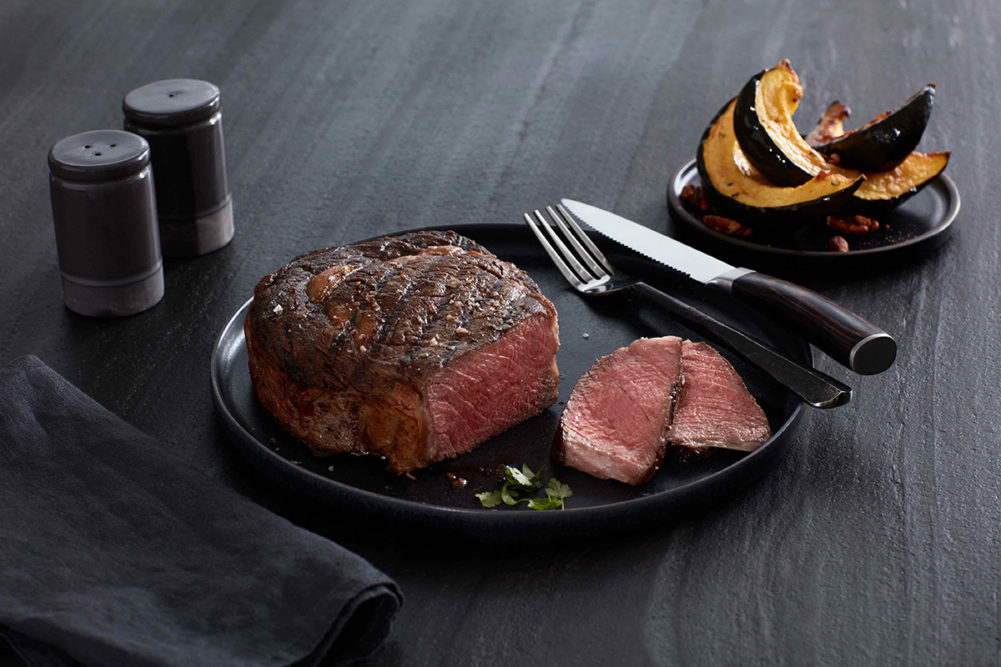
For many meat and poultry suppliers and their retail partners, finding the sweet spot between premium and affordable will be paramount going forward.
Kent Harrison, vice president of marketing and premium programs for Tyson Foods, Fresh Meats, said Tyson’s Chairman Reserve Platinum Angus Beef is one such flexible option.
“It provides consumers a lower price point than some cuts of prime beef, while still offering a premium eating experience.”
Tyson has also found that consumers are looking to find creative ways to stretch their dining budget by preparing restaurant-quality meals at home. The Chairman’s Reserve Meats brand does that and is backed with name-brand recognition and expert marketing support to inspire shoppers and build trust, resulting in higher basket rings, he said.
As consumers face inflation, it’s critical that packers and retailers focus on providing value to their customers, said Michael Uetz, principal of Midan Marketing.
How consumers define value can vary widely, Uetz said. Some shoppers consider low-cost grinds and roasts to represent the best value, while others look to things like Wagyu and USDA Prime for assurance they’re getting their money’s worth.
While inflation is troublesome, Uetz said, it’s important to keep things in perspective.
The U.S. Bureau of Labor Statistics’ October 2022 Consumer Price Index report, for instance, showed food as a whole at 10.9% inflation, but the meat category as a whole was just 2.9%.
Some meat categories are seeing an ease in inflation pressures, while others are still seeing it grow. October CPI for beef was down 3.6% year over year, but poultry was up 14.9% and pork up 4% year over year.
Right-sized
Another trend meat and poultry suppliers and their retail partners will be keeping a close eye on in 2023 is the evolution of packaging sizes.
“It will increasingly be important for retailers to supply case ready offerings that include smaller portion sizes for consumers,” Harrison said. “Case-ready value-added products have seen tremendous growth over the past decade and we don’t foresee demand slowing down in 2023.”
According to Charlotte, N.C.-based Sealed Air's 2022 National Meat Case Study, case ready makes up 83% of packages in the meat case. Case-ready products, Harrison said, help consumers who are searching for flavor and convenience. It also streamlines operations for the retailer by reducing waste, increasing food safety and consistency, and helps reduce out of stocks. As more retailers add case ready packaging to their meat case, Harrison said, its compact design makes it easily identifiable for consumers.
“The material used in case ready packaging can be printed with a brand’s product claims, nutritional benefits and preparation tips. It’s also easier for retailers to stock. We also know that consumers are being intentional when shopping the meat case; they are seeking out brands and products featuring on-pack claims that reflect their values.”
Faster, easier and more flavorful meal solutions will rule the meat case in the near term, Uetz said.
“Consumers became confident in the kitchen in the last few years, and now as they resume their normal, busy routines, many still want to cook for their families.”
Value added fresh meats offer the flavor and convenience they’re looking for, he added. Smaller cuts are great fits for kitchen appliances like air fryers, which many consumers became more familiar with during the pandemic.
That said, Midan is also keeping a close eye on the popularity of value-priced larger cuts, like roasts, which continue to grow sales. A roast, while a large purchase, can provide several meals to inflation-conscious shoppers.
Healthy options
For the past few years, Harrison said, consumers have been focused on illness and illness prevention. Now, the focus has shifted to an increased awareness of diet and nutrition.
“Consumers are becoming more educated about what is in their food and the amount they are eating. Focusing on high protein, clean ingredients, and portion sizes, will help meat producers respond to consumer health concerns in 2023.”
Tyson’s Open Prairie Natural* Meats brand exists to provide consumers a wholesome and responsible protein choice, Harrison said, categorizing the line as a “nothing added, never ever protein choice that you can feel good about.”
When it comes to health, consumers continue to seek high-quality protein sources, creating a huge growth opportunity for the meat industry, Uetz said.
One way to tap into it, he said, is to borrow an idea from other grocery departments.
“Center-of-the-store brands prominently showcase protein content on the front of their packages to call out health-focused attributes such as high protein, and to capture this market, meat companies should do the same,” he said. “Meat and poultry products are one of nature’s most nutrient dense food offerings, and the meat industry needs to do a much better job of owning this fact.”
Featured Webinars
The impact of fsma 204 on fresh food retailing and supermarkets, current issues.

Popular Articles
How retail media networks boost grocery sales, fivestar gourmet foods’ new simply fresh salad kits have 25% more toppings, walmart to pay $45 million settlement for pricing lawsuit, packaging priorities include convenience, trust, technology.
What caused Dubai floods? Experts cite climate change, not cloud seeding
- Medium Text
DID CLOUD SEEDING CAUSE THE STORM?

CAN'T CREATE CLOUDS FROM NOTHING
Coming soon: Get the latest news and expert analysis about the state of the global economy with Reuters Econ World. Sign up here.
Reporting by Alexander Cornwell; editing by Maha El Dahan and Alexandra Hudson
Our Standards: The Thomson Reuters Trust Principles. New Tab , opens new tab

World Chevron

Edmundo Gonzalez, Venezuela's low-profile and last-minute opposition candidate
As time was running out, Venezuela's opposition chose low-profile former diplomat Edmundo Gonzalez to run against President Nicolas Maduro in a July election that political analysts said will require Gonzalez to build name recognition among voters.

Ukraine attacked eight Russian regions with dozens of long-range strike drones, setting ablaze a fuel depot and hitting three power substations in a major attack early on Saturday, an intelligence source in Kyiv told Reuters.

IMAGES
VIDEO
COMMENTS
11.02.2022. By Rachael Oatman. KANSAS CITY, MO. — Cryovac Brand recently shared its latest findings from the 2022 National Meat Case Study, which spans a broad range of features including sales ...
As consumer trust and acceptance of case-ready has risen, the 2022 National Meat Case Study shows that case-ready is now the norm across all proteins, led by turkey (99%) and chicken (96%). Beef is the most likely to be cut in store, though case-ready has increased to 71% of packages from 66% in 2018. "For this study, we define case-ready as ...
The National Meat Case Study 2022 12. NMCS: the how and what behind the sales Eighth edition tracking trends in the meat case Understand trends in the fresh meat case in the U.S. • Data collection every +3 years since 2002 • 2022 replaces the 2021 mini study
As consumer trust and acceptance of case-ready has risen, the 2022 National Meat Case Study shows that case-ready is now the norm across all proteins, led by turkey (99%) and chicken (96%). Beef is the most likely to be cut in store, though case-ready has increased to 71% of packages from 66% in 2018. "For this study, we define case-ready as ...
October 24, 2022. Anne-Marie Roerink, principal of 210 Analytics and author of the annual Power of Meat report, presented an analysis of the CRYOVAC brand 2022 National Meat Case Study. This eighth edition of the NMCS, conducted between February and May of 2022, intends to provide an overview of meats in retail as well as trends in fresh meat.
Last week during a North American Meat Institute webinar, Roerink presented the latest data from the Cryovac Brand 2022 National Meat Case Study, the eighth edition to track trends in the meat case. The auditors for the study include Sealed Air Corporation field experts and Texas Tech students, with the store sample being a market reflection of ...
As consumer trust and acceptance of case-ready has risen, the 2022 National Meat Case Study shows that case-ready is now the norm across all proteins, led by turkey (99%) and chicken (96%). Beef is the most likely to be cut in store, though case-ready has increased to 71% of packages from 66% in 2018. "When we started this study in 2002, 51% ...
The National Meat Case Study, which has been sponsored by Sealed Air and its Cryovac brand since 2002, has shown a steady trend upward for case-ready fresh meat. Starting at 49% of the market 20 years ago, case ready's share has grown to 83% in the 2022 study, according to Stacey Couch, marketing development director retail and e-commerce for ...
Consumer trust and acceptance of case-ready meat is on the upswing, according to a the 2022 Cryovac Brand National Meat Case Study, sponsored by Cryovac Sealed Air and conducted by 210 Analytics for the North American Meat Institute.. The company's latest National Meat Case Study found that case-ready represents 83% of protein packages, up from 49% of fresh meat in 2002 and 81% in 2018.
Case-ready meats are more popular than ever. In fact, as consumer trust and acceptance of case-ready has increased, the 2022 National Meat Case Study reveals that case-ready is now the norm across all proteins, led by turkey (99%) and chicken (96%). Beef is the most likely to be cut in store, though case-ready has increased to 71% of packages ...
According to the 2022 National Meat Case Study, case ready makes up 83% of packages in the meat case. Case-ready products, Harrison said, help consumers who are searching for flavor and convenience.
The 2022 National Meat Case Study was conducted between February and May of 2022. The study refl ects research at 152 stores in 97 U.S. cities. —Greg Henderson As consumer trust and accep-tance of case-ready has risen, the 2022 National Meat Case Study shows that case-ready is now the norm across all proteins, led by turkey (99%) and chicken ...
According to the 2022 Cryovac National Meat Case Study, all natural is the most popular claim in the meat case across proteins. ... "Most shoppers rely on the meat case for routine purchases and the full-service counter for special occasions and requests," Rogers said. "Supporting our retail partners in both avenues is essential to ...
KANSAS CITY, MO. — Cryovac Brand recently shared its latest findings from the 2022 National Meat Case Study, which spans a broad range of features including sales, performance, packaging and packaging claims. During a webinar produced by the North American Meat Institute (NAMI) on Oct. 27, principal of 210 Analytics and author of the annual ...
And at the same time, consumer preference for case-ready meat has been growing for the past two decades. Findings from SEE's 2022 National Meat Case study show that case-ready packages across all proteins have grown in share from less than half of packages in the meat case in 2002 to 83% in 2022.
According to the Cryovac 2022 National Meat Case Study, case-ready makes up 83% of packages in the meat case, and this category has been less impacted by inflation. Product Categories > Meat.
During a webinar about the Cryovac Brand 2022 National Meat Case Study, Roerink identified four of the latest trends in the fresh meat retail case: 1. SKUs are contracting. The number of stock keeping units (SKUs) found in a retail store is contracting - and will continue to decrease in future years. "I think a SKU contraction will be ...
According to the 2022 National Meat Case Study by Sealed Air, 11% of total beef packages in the meat case had a grass-fed label. That is up from 10% in 2018. Food Products Operations Beef.
12.19.2022. By Andy Nelson. Case-ready's time has arrived. For years now, the Sealed Air National Meat Case Study has been showing steady growth in case-ready as a share of all packages in grocery meat cases. The 2022 study showed a continuation of that trend with a greater share of case-ready across all proteins, large and small.
In 2022, 83% of packages in the meat case, or 76% of SKUs, were case ready. 1. By protein, case ready ground beef has shown exponential growth. In 2022, 85% of ground beef was sold as packaged meat, compared to 3% in 2018. Just over 70% of all beef sold in 2022 was case ready, compared to 6% in 2018. Market penetration for case ready pork ...
A 2022 Cryovac Brand National Meat Case Study (NMCS), sponsored by Cryovac Sealed Air shows that case-ready continues to increase in popularity, currently representing 83% of retail protein packages. This is up from 49% of fresh meat in 2002 and 81% in 2018, according to the study. More and more retailers are switching to case-ready and it is ...
Case Study: 2022 National Meat Case Study findings unveiled. 2022 CRYOVAC brand case study reveals a growing trend for case-ready. Industry News. October 19, 2022. No Comments. Eighth edition of the NMCS reveals growth for case-ready and sustainable packaging. Read More.
M any consumers view conventional meats as both tastier and healthier than laboratory-grown alternatives, according to the March Consumer Food Insights Report.. The survey-based report out of Purdue University's Center for Food Demand Analysis and Sustainability assesses food spending, consumer satisfaction and values, support of agricultural and food policies and trust in information sources.
According to Charlotte, N.C.-based Sealed Air's 2022 National Meat Case Study, case ready makes up 83% of packages in the meat case. Case-ready products, Harrison said, help consumers who are searching for flavor and convenience. It also streamlines operations for the retailer by reducing waste, increasing food safety and consistency, and helps ...
April 17, 20249:07 AM PDTUpdated 28 min ago. [1/5]People walk through flood water caused by heavy rains, in Dubai, United Arab Emirates, April 17, 2024. REUTERS/Amr Alfiky Purchase Licensing ...